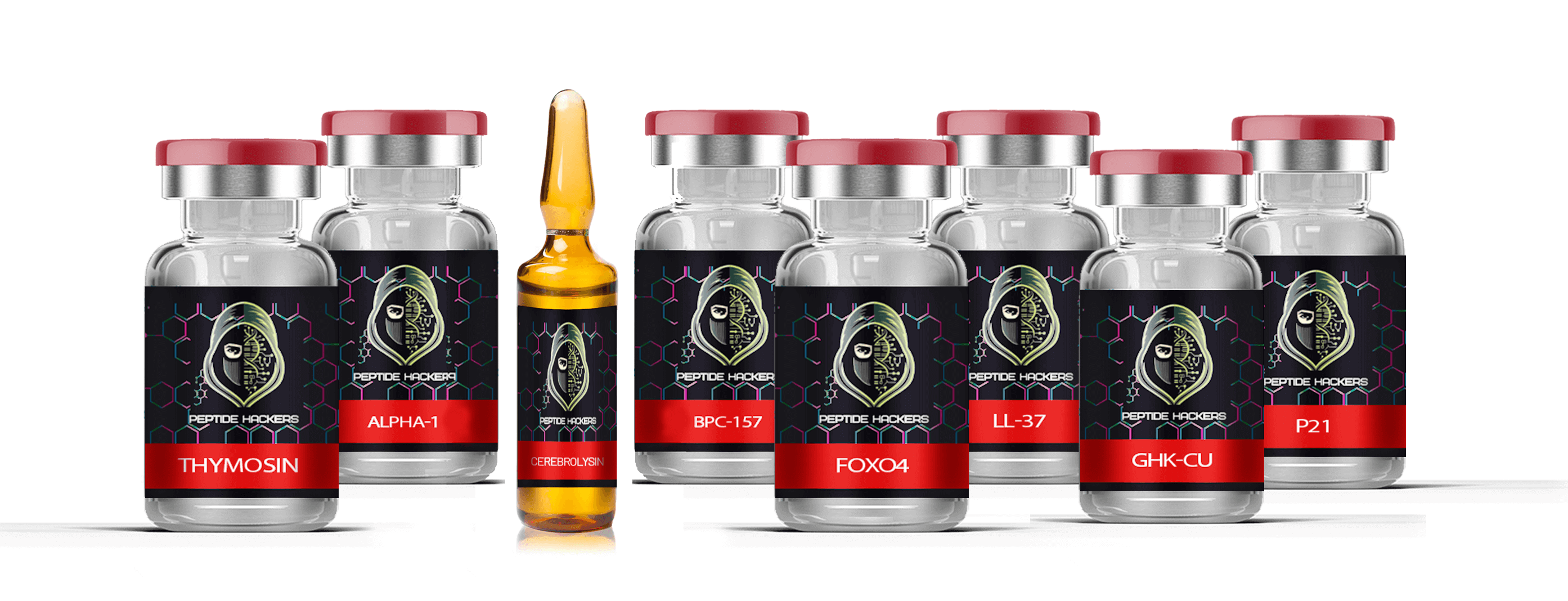Exploring Peptide Therapeutics: Innovations and Therapeutic Potential

Peptide Therapeutics: The Tiny Molecules Disrupting Medicine
In medicine, peptides are the quiet disruptors. For a long time, these short chains of amino acids were ignored in favour of the glamour of protein therapeutics and the ease of small molecules. But that’s changing. Peptide based drugs are proving their unique combination of precision, efficacy and versatility can tackle some of medicine’s biggest challenges – from diabetes to cancer, from infectious diseases to chronic pain.
Cell penetrating peptides are being explored as innovative drug delivery tools for anticancer, antiviral, and antibacterial treatments, enhancing patient outcomes through improved delivery mechanisms.
Unlike larger, more complex therapeutic proteins or the standard drugs that target disease with a shotgun instead of a scalpel, therapeutic peptides offer unparalleled specificity and safety. They can target disease at the molecular level, often mimicking or enhancing processes that already occur in the body. Scientists are exploring their use for therapeutic applications in everything from fighting resistant bacteria with antimicrobial peptides (AMPs) to designing peptide vaccines for diseases like cancer.
So, what exactly are peptides and why are they so hot in drug development? Let’s get into it.
What Are Peptides and Why Do They Matter?
At their most basic, peptides are short chains of amino acids, typically 2 to 50 in length. If you think of chemical structure of therapeutic proteins as massive, complex skyscrapers, then peptides are little cottages – simple, functional and much easier to build and modify.
Natural amino acids or peptides, made by the body, play a huge role in almost every biological function. They regulate hormones, help cells communicate and even act as first line of defence against infections. Scientists have taken this natural amino acids toolkit and expanded it, creating synthetic peptides in the lab to enhance their stability, longevity and overall efficacy. These lab made peptides are often engineered to include unnatural amino acids or structural tweaks like peptide cyclization (where the peptide is formed into a circular structure to protect it from breakdown). In other cases, stapled peptides are developed, which strengthen their secondary or tertiary structure, making them more stable and potent. However, natural peptides face challenges such as poor in vivo stability and weak membrane permeability.
Because of their small size and simplicity compared to proteins, cyclic peptides are easier to produce through chemical synthesis, specifically Solid Phase Peptide Synthesis (SPPS). This allows researchers to build peptide sequences amino acid by amino acid, customise them for specific uses. Modern advancements like microwave assisted synthesis have even speeded up the process, making it possible to produce peptides more efficiently and at scale. Cyclic peptides, with their unique structural properties, are particularly promising in drug discovery and therapeutic interventions.
Why Are Peptides So Good in Medicine?
Peptides are nature’s precision tools. Unlike small molecules which often interact with multiple parts of the body (and cause side effects), peptide based drugs are highly specific. They target specific extracellular targets, intracellular targets or drug targets, binding tightly and effectively like a key in a lock. This specificity is a big advantage in peptide drug discovery as it allows researchers to design drugs that tackle disease without collateral damage to healthy cells.
Here are the reasons why peptides are being called game changers:
1. High Specificity, Low Side Effects
Peptides can interact with hard to target areas like protein-protein interactions which are often considered undruggable by traditional therapies. For example in cancer treatment, peptides are used to disrupt signalling pathways between proteins that fuel tumour growth. They can also bind to G protein coupled receptors (GPCRs) which are involved in many biological functions, from hormone regulation to cell growth.
2. Safer and Less Toxic
Because many therapeutic peptides are designed to mimic natural processes, they are less likely to be toxic. They don’t hang around in the body for long, which minimises the risk of accumulation related side effects. For example, GLP-1 receptor agonists like Semaglutide are used to manage diabetes, controlling blood sugar without the nasty side effects of older drugs. Glucagon-like peptide-1 (GLP-1) stimulates insulin secretion and lowers glucose levels in type 2 diabetes mellitus, and GLP-1 receptor agonists also show potential benefits in weight management by inhibiting food intake.
3. Easy Customisation and Engineering
The beauty of peptides is their flexibility. Researchers can modify the amino acid sequence, incorporate d-amino acids or introduce disulfide bonds to peptide hormone make them more stable. Techniques like peptide cyclization or adding lysine residues can make peptides more resistant to enzymatic degradation, so they last longer in the body. It’s this malleability that has made peptide based drug discovery so hot.
Peptide Synthesis and Manufacturing
Real World Applications: Where Peptides Are Making a Difference
Peptides aren’t just theoretical anymore. They’re being developed and used in some of the most important areas of medicine. Here are the applications:
1. Fighting Resistant Infections with Antimicrobial Peptides
Antimicrobial peptides (AMPs) are part of our body’s natural defence system and are being adapted into therapies to fight drug resistant bacteria. These peptides attack the cell membranes of bad bugs, essentially punching holes in them. Unlike antibiotics which target specific bacterial processes (and can become ineffective due to resistance), AMPs are a broad spectrum solution.
2. Cancer Therapies That Target GPCRs and Protein Interactions
Cancer is one of the hardest diseases to treat but peptides are helping researchers attack it from multiple angles. Peptide drugs can target G protein coupled receptors (GPCRs) which are involved in tumour growth and metastasis. They’re also used to disrupt protein protein interactions, cutting off the signalling pathways that cancer cells use to survive.
3. Managing Diabetes with GLP-1 Receptor Agonists
One of the most well known successes in clinical development of peptide based therapeutics is in diabetes management. Drugs like Semaglutide, a GLP-1 receptor agonist, control blood sugar and promote weight loss—a two for one solution that has made these therapies so popular.
Another significant advancement in peptide drugs is in targeting the human immunodeficiency virus (HIV). Enfuvirtide, a designer peptide, inhibits HIV gp41, playing a crucial role in the treatment of HIV infection despite challenges in its effectiveness and administration.
4. Severe Chronic Pain Relief
Pain management is another area where peptides excel. By targeting ion channel ligands in nerve cells, peptide based drugs can block pain signals at the source. This is a non-opioid solution for treating severe chronic pain.
5. Hormonal Therapies and Vaccines
Peptides are used in therapies for hormonal disorders, including treatments that increase growth hormone levels. They’re also part of peptide vaccines which are being developed to fight cancer and infectious diseases.
Peptide Drug Development Challenges
Of course no therapy is perfect and peptides have their own set of challenges that researchers are working to overcome:
-
Fragility and Short Half-Life
Peptides break down quickly in the body due to enzymatic degradation. To address this scientists use modifications like PEGylation, peptide cyclization or the inclusion of unnatural amino acids to extend their half-life. -
Delivery Limitations
Most peptides can’t be taken as pills as the stomach enzymes would break them down before they’re absorbed. Injection is the primary delivery method but researchers are exploring oral administration using nanoparticles or attaching peptides to carrier molecules like human serum albumin. -
Immune Reactions
In some cases the immune system may recognize peptides as foreign and mount an antibody response. To reduce this risk scientists are developing peptide analogues and modifying their structure to avoid immunity.
Success Stories: Approved Peptide Drugs Making a Difference
Peptides aren’t just in the lab—they’re already working. Here are a few approved peptide drugs:
-
Semaglutide (Ozempic): A diabetes drug that’s also a weight loss therapy.
-
Tesamorelin: A peptide that increases growth hormone in HIV patients.
-
Lucinactant: A treatment for premature infants with respiratory distress syndrome.
-
Lutetium Lu 177 dotatate: A targeted therapy for neuroendocrine tumours.
Future of Peptide Therapeutics
The future of peptides in medicine is just beginning. Here’s what’s to come:
-
Better Design: Peptide chemistry is advancing to create more stable peptides, stronger protein secondary structures and higher activity.
-
Personalised Medicine: Peptides can be designed to target specific patient needs, hence individualised treatments.
-
Combination Therapies: By combining peptides with other therapies researchers can amplify their effect especially in tough conditions like cancer.
Conclusion: Small but Big
Peptides may be small molecules but their impact on medicine is big. These targeted therapies are already changing the way we approach diabetes, cancer and infections. With more than peptide drug discovery, development, peptide design and clinical trials we’re just getting started.
The future of medicine is precise, customised and powered by peptides.

